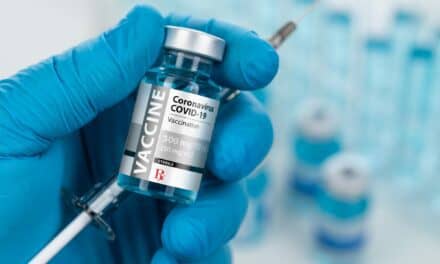Silver and copper may prove key in preventing nosocomial infections, which kill nearly 88,000 per year.
By Kristi L. Farrington, RRT, BCS, CCRC; and Lee E. Morrow, MD, MS
In the last days of Krypton, a chain reaction within the planet’s core caused a build-up of enormous pressures, fusing the minerals inside the planet Krypton into the new, radioactive, super-actinide element kryptonium. Kryptonite, the ore of kryptonium, induces lassitude and inertia followed by death if not removed in time from Superman’s presence.1
Historically speaking, sinister metals harboring murderous powers have been found only in the pages of comic books. The concept, however, is more fact than science fiction. There has been a recent surge in scientific interest regarding how best to harness the antimicrobial properties of certain elemental metals and metal salts. In order to exploit the favorable qualities of these metals effectively, users must incorporate them into relevant clinical settings in a cost-effective manner.

Hospital-acquired infections are a huge (and growing) problem. According to the Centers for Disease Control and Prevention,2 nosocomial infections affect approximately 2 million people annually in the United States. This results in nearly 88,000 deaths per year, the equivalent of one death every 6 minutes. In addition to the lives lost, nosocomial infections add an estimated $5 billion to $6.7 billion to US health care costs.2
Interest in using antimicrobial metals to reduce nosocomial infection rates stems from the fact that multiple vectors that are potential sources of these infections (such as air-handling systems, hospital linens, water-supply systems, and mechanical ventilators) lend themselves to the incorporation of such metals. One particularly promising area for the use of this technology is that of indwelling catheters and/or devices associated with the formation of biofilms.
Microorganisms routinely attach to various living and nonliving surfaces, including those of indwelling medical devices. These populations of tightly adherent microorganisms become encased in a matrix of extracellular polysaccharides produced by the host reaction to the foreign body and the microbes themselves. This gelatinous substrate and the populations of microorganisms it contains constitute the biofilm. The biofilm impedes inflammatory cell function and minimizes antibiotic penetration, leading to persistence of sessile microbe communities with chronic exposure to subtherapeutic antibiotic concentrations. This environment leads to antibiotic resistance and/or chronic bacterial infections.3,4
If biofilm formation is a key mechanism in infection pathogenesis and the generation of resistant organisms, how can this slime coat be manipulated to minimize its adverse consequences? Because it is nearly impossible for conventional antibiotics to penetrate the biofilm’s exterior, prevention and treatment options may require delivery of antimicrobial agents from within the surface acting as the nidus for biofilm formation. Incorporation of antimicrobial metals into medical devices is an appealing opportunity to reduce biofilm formation and to minimize the bacterial burden of established biofilms.
Silver
Extremely small amounts of silver have significant effects on bacteria, a phenomenon referred to as oligodynamic activity. Silver has the most powerful oligodynamic activity of the metals, followed closely by copper.5 These differential oligodynamic effects are shown in the figure. The oligodynamic activity of metals provides a valuable alternative to the use of systemic antibiotics and/or disinfectants in certain situations.6
The most convincing application of the oligodynamic activity of silver is the routine use of indwelling Foley catheters coated with a silver alloy hydrogel. This silver alloy leaches silver ions into the immediate environment of the catheter, thereby reducing bacterial colonization, preventing biofilm formation, and ultimately reducing rates of urinary tract infection.7 This reduction resulted in a significant cost saving over the range of cost estimates modeled.7 In response to the clinical and financial success of silver-coated Foley catheters, investigators have explored other silver-coated devices, including central venous catheters, endotracheal tubes, bandages, sutures, and tubing.
The clinical benefits seen for the use of silver-coated urinary catheters were quickly extrapolated to central venous catheters; the effects of silver-coated central venous catheters on bloodstream infections have subsequently been investigated in detail. The precise delivery of silver has varied among studies, however, with some using a silver-coated cuff at the site of skin entry, some using a silver coating along the entire catheter length, and some using a concurrent antiseptic coating (typically chlorhexidine). These studies have reached widely discrepant results, probably caused by inconsistencies between devices, marked differences in the average duration of catheter use, varied standards of catheter care after insertion, small study sample sizes, and inherent differences among the patient populations being studied.8-13 One particularly insightful, thorough meta-analysis14 of anti-infective central venous catheters concluded that catheters coated with chlorhexidine and silver sulfadiazine are anti-infective only for short insertion times (approximately a week). The most rigorous study15 of the cost-effectiveness of central venous catheters impregnated with chlorhexidine and silver sulfadiazine found that these devices were effective and provided significant cost savings “in patients at high risk of catheter-related infections.”15 At present, there is no consensus opinion on the routine use of silver-coated central venous catheters to prevent bloodstream infections.

Reprinted with permission from Microbiology, an Introduction.35
The effectiveness of silver-coated endotracheal tubes and tracheostomy appliances is also an area of active investigation. One group of investigators16 found that tracheostomy devices composed of various materials such as polyvinyl chloride (PVC), silicone, stainless steel, and sterling silver were equally susceptible to biofilm formation when cultured with either Pseudomonas aeruginosa or Staphylococcus epidermidis. The clinical relevance of this study is unclear, given the in vitro model used and the evaluation of only two organisms.
A 2004 study17 using an in vivo animal model examined the effect of a silver-sulfadiazine and chlorhexidine coating for endotracheal tubes on the rate of colonization of the ventilator circuit, the endotracheal tube, and the lungs. These investigators found that, compared with conventional endotracheal tubes, the antimicrobial endotracheal tubes reduced biofilm formation, reduced ventilator-circuit colonization, and prevented tracheobronchial colonization. Although this study can be criticized for its use of an animal model and its small sample size, the results suggest that antimicrobial metal technology could play a role in reducing nosocomial pneumonia. At present, an ongoing large, multicenter, randomized, controlled trial is investigating the clinical utility of silver-coated endotracheal tubes in the adult intensive care unit.
Two procedures have been used to modify gauze bandages, polyester sutures, silicone tubing, and PVC tubing. In the first procedure, the materials are modified via precipitation of metallic hydroxides, which allows the adsorption of silver ions. In the second procedure, the materials are soaked in sodium pyrophosphate or sodium chloride, dried, and then soaked in silver nitrate. These procedures deposit silver ions along the surfaces of the tubing/sutures and within the fibers of the gauze bandages. These modified materials inhibit the growth of P. aeruginosa, Escherichia coli, and Staphylococcus aureus in vitro.18 This technology is also beginning to be embraced commercially, with garment producers recently marketing “silver-lined socks” with “threads of pure silver woven in” for “anti-microbial and anti-fungal properties.”18a While the potential benefits of antimicrobial linens are intriguing, the efficacy of such products has not been rigorously studied.
Copper
Only silver has more oligodynamic activity than copper.15 The oligodynamic activity of copper ions, either alone or as complexes, has been exploited for centuries to disinfect liquids, solids, and human tissue.19 One study2 investigated the bactericidal properties of copper, brass, aluminum, and stainless steel. Bacteria in this in vitro study included E. coli, S. aureus, Streptococcus Group D, and Pseudomonas species. Strips of metal were inoculated with microbes, air-dried for 24 hours at room temperature, inoculated onto blood agar plates, and then incubated for 24 hours at 37°C. Copper and brass (a copper alloy) showed little or no growth, while aluminum and stainless steel produced heavy growth of all microbes. Copper was most efficient at eradicating bacteria, disinfecting itself of some microbes in as few as 15 minutes. The speed with which brass was able to disinfect itself was determined by surface conditions. Although freshly scoured brass became sterile within an hour, tarnished brass required up to 7 hours to rid itself of growth.
The favorable oligodynamic properties of copper led to its use in many early ventilators in the late 1960s; one model used copper scrubbing sponges on both the efferent and afferent sides of the humidification system. One study5 introduced pathogenic organisms into ventilators and then used these machines to ventilate a rubber bag. After several hours of cycling, the humidifier contents were removed and cultured. In all instances where copper scrubbing sponges were used, no organisms could be grown. Nonetheless, given the added cost, space needs, and weight of copper (as opposed to other metals and/or plastic) and its uncertain clinical benefits, the incorporation of copper into ventilator humidifiers has been abandoned.
Copper can be used in other ways for its bacteriostatic actions. Technology has been developed that introduces copper into cotton fibers, latex, and other polymeric materials. This technology has allowed the production of antiviral gloves and filters, self-sterilizing fabrics like hospital bed linens that kill antibiotic-resistant bacteria such as methicillin-resistant S. aureus and vancomycin-resistant enterococci, antifungal socks to alleviate the symptoms of athlete’s foot, and anti–dust-mite mattress covers. These applications target important medical problems such as viral transmission, nosocomial infection, and the spread of resistant bacteria.19
Studies20-23 have examined the oligodynamic properties of other metals, including gold, cobalt, nickel, titanium, iron, and vanadium. Although the resulting data are limited, they suggest that these agents may also have bactericidal activity against a wide array of bacteria, fungi, and protozoa. The precise antimicrobial effects depend on the metal of interest, environmental conditions, and the pathogens being targeted. These studies also suggest that resistance to heavy-metal ions is negligible.
Metal Combinations
An intuitive next step is the evaluation of the oligodynamic properties and clinical applications of metal alloys. The optimal combinations of metals, whether combination therapy is additive or synergistic, and whether the physical properties of alloys would lend themselves to medical-device manufacturing are still unknown. A study24 performed in Canada in 1993 looked at the antibacterial activity of copper and silver used together. Materials such as butyl rubber, silicon rubber, PVC, and Teflon® were coated with silver, copper, or a silver-copper combination. It was found that when S. epidermidis or S. aureus was applied to butyl rubber coated with copper or with copper and silver, bacterial numbers were greatly reduced within 10 hours and eliminated within 24 hours of inoculation. Antibacterial activity was significantly less in both uncoated and silver-coated butyl rubber. Silver-copper–coated and copper-coated silicon rubber, PVC, and Teflon were even more effective than silver-copper–coated or copper-coated butyl rubber. Further, silver-copper–layered surface films showed antimicrobial activity against P. aeruginosa biofilm formation. The study concluded that multiple-metal surface-film combinations showed great promise in lowering the incidence of device-associated nosocomial infection.
Zeolites are naturally occurring silicates that have the capacity to act as ion exchangers. These agents can be chemically altered to contain any of a wide selection of metal ions. A ceramic coating has been manufactured containing 2.5% silver ions and 14% zinc ions. When applied to stainless steel, this coating significantly reduces the survival of S. aureus, E. coli, and Legionella pneumophila.25 Because the CDC has identified environmental surfaces as an area of concern in the transmission of infection in health care facilities, the innumerable hospital surfaces constructed from stainless steel (a known reservoir for pathogenic bacteria) are prime targets for this technology.26 Although the use of zeolite coatings may reduce nosocomial infection rates, the duration of efficacy for this product is poorly characterized.27
Stainless Steel
Stainless steel is widely used in commercial settings and throughout health care facilities. In hospitals, brushed stainless steel is ubiquitous in food-service areas, in pharmacies, at nursing stations, and in patients’ rooms. The widespread use of stainless steel can be attributed to its durability, its aseptic appearance, and its limited need for care. Several of the previously referenced studies, however, suggest that stainless steel has limited (if any) oligodynamic activity, and the brushed surface acts as a reservoir for multiple strains of pathogens.2,25,26 Replacement of the abundance of stainless steel with less bacteria-friendly metal surfaces and/or coatings might significantly reduce nosocomial infection rates.
Contaminated Water
Water systems in health care facilities are another area of concern identified by the CDC guidelines.26 L. pneumophila, Pseudomonas species, and other aquatic microorganisms can be found in almost all municipal water systems. Despite standard water treatments, many of these microorganisms survive and are delivered to health care facilities in significant numbers. These pathogens can then spread in the hospital environment through ingestion, inhalation, surface absorption, contaminated instruments, or contaminated utensils.2
There is an extensive body of literature12,28-33 regarding the role of antimicrobial metals in the purification of water-delivery systems. Silver pipes, copper pipes, and silver-copper ionized pipes have all been shown to reduce the water density of L. pneumophila significantly, compared with iron or polyethylene pipes. Furthermore, the oligodynamic effects of the silver and copper ions appear to be added to the effects of routine chlorination. These effects are concentration dependent and pH dependent. One study32 suggests that Legionella developed silver tolerance over a 4-year period.
Air Handling
The CDC guidelines26 identify air-handling systems as another area of concern. Heating, ventilation, and air-conditioning (HVAC) systems are potential sources of microorganism dispersal throughout a health care facility. Nosocomial Legionnaire disease has been associated with the mist from unclean rooftop water-cooled HVAC towers. Copper compounds have been used to control the levels of bacteria in these towers. Copper-containing agents also prevent the development of algae and associated biofilms that harbor L. pneumophila.2 Studies measuring the direct patient benefits of using this strategy are lacking and need to be pursued. Incorporation of silver-containing and/or zinc-containing zeolite in the production of air ducts, condensation pans, intake fans, and exhaust vents also has the potential to reduce the number of pathogens in air-handling systems.34
Conclusion
Nosocomial infections caused by antibiotic-resistant microorganisms prolong hospital stays, increase mortality, and have huge financial costs. In this era of increasing antimicrobial resistance and limited new antibiotic agents, prevention of infections must become a priority for clinical researchers and health care providers. Ideally, nonpharmacological methods for preventing nosocomial infection will reduce antibiotic consumption, thereby minimizing the selective pressures leading to the proliferation of resistant pathogen strains.
One such strategy is to capitalize on the oligodynamic effects of selected metals that can be incorporated into medical devices, water-delivery conduits, HVAC systems, and hospital surfaces. Ideally, this would create a maximally sterile environment for patients. Although the studies supporting these technologies are promising, the cumulative data are relatively limited and have generated a multitude of new questions. Will bacteria develop resistance to these metals, as they have to conventional antibiotics? Do other metals and/or metal salts have even more favorable oligodynamic properties than copper and silver? Are there synergistic relationships between metals and/or antiseptic agents that are currently unknown? Would the number of infections prevented justify the immense costs associated with incorporating these metals into the existing infrastructure?
Without a commitment to rigorous investigation of the opportunities for nosocomial infection prophylaxis, we might as well start looking for kryptonite.
RT
Kristi L. Farrington, RRT, BCS, CCRC, is a research coordinator, and Lee E. Morrow, MD, MS, is assistant professor and associate program director, Division of Pulmonary and Critical Care at Creighton University Medical Center, Omaha, Neb.
References
1. Fleischer ML. The Great Superman Book. New York: Random House; 1978.
2. Dresher WH. Copper helps control infection in healthcare facilities. Available at: http://www.copper.org/innovations/2004/aug/copper
_helps_control_infection_in_healthcare_facilities.html. Accessed August 20, 2005.
3. Donlan RM. Biofilms and device-associated infections. Emerg Infect Dis. 2001;7:277-281.
4. Costerton JW, Philip SS, Greenberg EP. Bacterial biofilms: a common cause of persistent infections. Science. 1999;284:1318-1322.
5. Deane RS, Mills EL, Hamel AH. Antibacterial action of copper in respiratory therapy apparatus. Chest. 1970;58:373-377.
6. Samuel U, Guggenbichler JP. Prevention of catheter-related infections: the potential of a new nano-silver impregnated catheter. Int J Antimicrob Agents. 2004;23(suppl 1):75-78.
7. Rupp ME, Fitzgerald T, Marion N, et al. Effect of silver-coated urinary catheters: efficacy, cost-effectiveness, and antimicrobial resistance. Am J Infect Control. 2004;32:445-450.
8. Bach A, Eberhardt H, Schmidt H, Bottiger BW, Martin E. Efficacy of silver-coated central venous catheters in reducing bacterial colonization. Crit Care Med. 1999;27:515-521.
9. Bong JJ, Kite P, Wilco MH, McMahon MJ. Prevention of catheter related bloodstream infection by silver iontophoretic central venous catheters: a randomised controlled trial. J Clin Pathol. 2003;56:731-735.
10. Sheng WH, Ko WJ, Wang JT, Chang SC, Hsueh PR, Luh KT. Evaluation of antiseptic-impregnated central venous catheters for prevention of catheter-related infection in intensive care unit patients. Diagn Microbiol Infect Dis. 2000;38:1-5.
11. Collin GR. Decreasing catheter colonization through the use of an antiseptic-impregnated catheter: a continuous quality improvement project. Chest. 1999;115:1632-1640.
12. Maki DG, Stolz SM, Wheeler S, Mermel LA. Prevention of central venous catheter-related bloodstream infection by use of antiseptic-impregnated catheter. a randomized, controlled trial. Ann Intern Med. 1997;127:257-266.
13. Heard SO, Wagle M, Vijayakumar E, et al. Influence of triple-lumen central venous catheters coated with chlorhexidine and silver sulfadiazine on the incidence of catheter-related bacteremia. Arch Intern Med. 1998;158:81-87.
14. Walder B, Pittet D, Tramer MR. Prevention of bloodstream infections with central venous catheters treated with anti-infective agents depends on catheter type and insertion time: evidence from a meta-analysis. Infect Control Hosp Epidemiol. 2002;23:748-756.
15. Veenstra DL, Saint S, Sullivan SD. Cost-effectiveness of antiseptic-impregnated central venous catheters for the prevention of catheter-related bloodstream infections. JAMA. 1999;282:554-560.
16. Jarrett WA, Ribes J, Manaligod JM. Biofilm formation on tracheostomy tubes. Ear Nose Throat J. 2002;81:659-661.
17. Berra L, DeMarchi L, Yu ZX, Laquerriere P, Baccarelli A, Kolobow T. Endotracheal tubes coated with antiseptics decrease bacterial colonization of the ventilator circuits, lungs, and endotracheal tube. Anesthesiology. 2004;100:1446-1456.
18. Farrah SR, Erdos GW. The production of antibacterial tubing, sutures, and bandages by in situ precipitation of metallic salts. Can J Microbiol. 1991;37:445-449.
18a. Silver-lined socks prevent odor, itching and bacteria. Gardener’s Supply Catalog. Summer 2005: 25.
19. Borkow G, Gabbay J. Putting copper into action: copper-impregnated products with potent biocidal activities. FASEB J. 2004;18:1728-1730.
20. Millar MR, Griffin N, Keyworth N. Pattern of antibiotic and heavy-metal ion resistance in recent hospital isolates of S. aureus. Epidemiol Infect. 1987;99:343-347.
21. Novelli F, Recine M, Sparatore F, Juliano C. Gold (I) complexes as antimicrobial agents. Farmaco. 1999;54:232-236.
22. Bundy KJ, Butler MF, Hochman RF. An investigation of the bacteriostatic properties of pure metals. J Biomed Mater Res. 1980;14:653-663.
23. Yu TS. Effect of titanium-ion on the growth of various bacterial species. J Microbiol. 2004;42:47-50.
24. McLean RJ, Hussain AA, Sayer M, Vincent PJ, Hughes DJ, Smith TJ. Antibacterial activity of multilayer silver-copper surface films on catheter material. Can J Microbiol. 1993;39:895-899.
25. Bright KR, Gerba CP, Rusin PA. Rapid reduction of Legionella pneumophila on stainless steel with zeolite coatings containing silver and zinc ions. Letters in Applied Microbiology. 2003;36(2):69-72. doi: 10.1046/j.1472-765X.2003.01265.x
26. Sehulster LM, Chinn RYW, Arduino MJ, et al. Guidelines for Environmental Infection Control in Health-Care Facilities. Recommendations from CDC and the Healthcare Infection Control Practices Advisory Committee (HICPAC). Chicago: American Society for Healthcare Engineering/American Hospital Association; 2004.
27. Bright KR, Gerba CP, Rusin PA. Rapid reduction of S. aureus populations on stainless steel surfaces by zeolite ceramic coatings containing silver and zinc ions. J Hosp Infect. 2002;52:307-309.
28. Pongratz A, Schwarzkopf A, Hahn H, Heesemann J, Karch H, Doll W. The effect of the pipe material of the drinking water system on the frequency of Legionella in a hospital. Zentralbl Hyg Umweltmed. 1994;195:483-488.
29. Liu Z, Stout JE, Tedesco L, et al. Controlled evaluation of copper-silver ionization in eradicating Legionella pneumophila from a hospital water distribution system. J Infect Dis. 1994;169:919-922.
30. Biurrun A, Caballero L, Pelaz C, Leon E, Gago A. Treatment of a Legionella pneumophila-colonized water distribution system using copper-silver ionization and continuous chlorination. Infect Control Hosp Epidemiol. 1999;20:426-428.
31. Sabria M, Yu VL. Hospital acquired legionellosis: solutions for a preventable infection. Lancet Infect Dis. 2002;2:368-373.
32. Rohr U, Senger M, Selenka F, Turley R, Wilhelm M. Four years of experience with silver-copper ionization for control of Legionella in a German university hospital hot water plumbing system. Clin Infect Dis. 1999;29:1507-1511.
33. Lin YS, Vidic RD, Stout JE, Yu VL. Negative effect of high pH on biocidal efficacy of copper and silver ions in controlling Legionella pneumophila. Appl Environ Microbiol. 2002;68:2711-2715.
34. Rusin P, Bright K, Gerba C. Rapid reduction of Legionella pneumophila on stainless steel with zeolite coatings containing silver and zinc ions [letter]. Appl Microbiol. 2003;36:69.
35. Tortora G, Funke B, Case C. Microbiology, an Introduction. 4th ed. Redwood City, Calif: Benjamin/Cummings Publishing; 1992:181.










